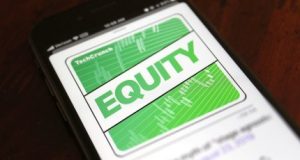How is it possible that, for the past five years, the smartwatch recognized as the world’s best was also a watch that didn’t always show the time?
This is the truth, though. From the time the Apple Watch first launched in 2015, it evolved from is-it-an-iPhone-killer? to a killer fitness tracker to an FDA-cleared ECG monitor. Reader: The Apple Watch has saved lives. It has located women who were swept out to sea. It has made men with erratic heartbeats cry after learning how close they were to the brink of death.
And yet it doesn’t always show the time of day. Not unless you tap on it or twist your wrist toward your face.
Until now, that is. The Apple Watch Series 5 is the first Apple Watch to always shows the time. If you were to put last year’s Series 4 next to this year’s Series 5, you’d hardly notice any differences. The “digital crown” on the side of the watch even has the same thin line if you have the cellular version. What you would notice is that, when the Series 4’s screen goes to sleep after 15 seconds, the Series 5’s screen transitions to a dimmed, shrunken version of whichever watch face you’re using.
Tracker Primer
Photograph: Lauren Joseph; Styling: Lauryn Hill
A lot of people reading this review might already know what the Apple Watch is for and how it works. But unlike smartphones, which have matured as a product and are used by most of the global population, wearables still carry an air of mystery for a lot of consumers.
The Apple Watch connects wirelessly to an iPhone and tracks your movement throughout the day. It also shows you the same notifications you see on your phone. While this often means a veritable bees’ nest of flutters and buzzes and pings on your wrist, it provides the benefit of not always having to check your phone. When you get a text, you don’t need to reach into your pocket; you can look at your wrist.
When it was first rolled out, the Apple Watch was also pitched as a platform for third-party apps. But over time, its value as a fitness tracker and as a platform for Apple apps became clear. I personally like the Apple Watch as a fitness tracker. Even when I’m not in active workout phases, it tracks how much I’m moving and standing up. Over the past year I have swapped it out only for a Samsung smartwatch or a Garmin wearable with a much longer-lasting battery and the ability to track my sleep.
The Apple Watch is very useful for Messages notifications, but as a desk worker I’m already glued to larger screens with apps. Anecdotally, doctors, nurses, drivers, people working in food service and hospitality—people who can’t check their messages throughout the day—tell me they like the Apple Watch as an alternative way to receive notifications.
Case Study
This year’s Apple Watch doesn’t look different from last year’s Watch. I wouldn’t say the Apple Watch is unilaterally attractive, but it is distinctive. It lacks the overtly masculine aesthetic some sporty smartwatches have, and it’s more sophisticated than most Fitbits. (Then again, Fitbits are less expensive than Apple Watches, and work with Android phones instead of just with iOS devices.)
This year’s base model of Apple Watch has an aluminum case, just like in past years. It costs $399, unless you want one with a cellular modem (for when you’re swept out to sea!), in which case it costs $499. You can upgrade to a stainless steel model ($699), a titanium version ($799), or a model with a ceramic case ($1,299). You can even buy a Hermès-branded version for the low, low price of $1,399. I’ve been wearing the aluminum Series 5 with cellular connectivity.
The Watch comes with easy-to-swap watch bands, and this year the buying flow for a new watch is more customizable: You can go to the Apple website and pick your size, casing, and band all at the same time. Some of the pricier bands cost an extra $100 or more.
If those prices are all too steep, you can now buy the Apple Watch Series 3 for a discounted $199. It has GPS and the water expulsion feature first introduced in the Series 2, so you can take it in the pool. It also has the option to add cellular connectivity for another $100. But the Series 3 will have an older chip in it, and it won’t support Apple’s ECG recording app and other scattered features, like fall detection or the ability to raise your wrist and speak immediately to Siri without saying “Hey Siri” first. The Apple Watch Series 5 does all of this. (If you’re wondering what happened to the Series 4, it is no longer being sold by Apple.)
Inside Story
Speaking of chips, the Apple Watch Series 5 has the same performance specs as the smartwatch before it. It technically has a new SIP—that’s system in a package—because Apple has added the sensors needed to power a digital compass on the watch, plus a modem that supports international emergency calling. But the processor speeds are the same as last year’s, a surprise from a company that boasts about its mobile chip innovation almost annually.
I wasn’t able to test the brand-new international emergency calling feature. My editors did not approve a last-minute trip to Mexico, if you can believe it. But I did use the smartwatch to make phone calls independent of my actual phone. I didn’t experience any glitches when I walked out of the office and initiated phone calls—a scenario that caused issues in the earliest days of cellular Apple watches because of the handoff from Wi-Fi networks to cellular—and calls sounded great, for a smartwatch. My mom, my main phone-call squeeze, agreed.
Perpetual Light
The standout new feature on the Apple Watch Series 5 is the always-on display. It’s a small change that impacts the usefulness of the watch in a real way. Finally: The Apple Watch is now a watch that always tells the time. Apple claims this display is the first of its kind in the industry; others, such as Garmin, Polar, Fitbit, and the ill-fated Pebble, have previously done always-on display smartwatches, but with different kinds of screens. Apple has taken low-temperature polysilicon oxide technology and integrated it into the Watch’s OLED display.
Photograph: Lauren Joseph; Styling: Lauryn Hill
So instead of the screen going totally black, the face dims and shrinks a little bit. This always-on mode only works across certain apps and watch faces to start. It works on all of Apple’s own watch faces; Apple still isn’t open to the idea of third-party app makers owning the face of its smartwatch. It also works in Apple’s exercise app, which means during outdoor runs I could always catch a glimpse of the workout timer and my pace and distance.
Unfortunately, this dimmed display is also hard to see in bright sunlight, something the thin-film transistor LCDs found in some other smartwatches don’t suffer from as much. And with other apps on the watch, like the phone app, always-on mode simply shows the time of day. If you’re using the Watch to make a call, the dimmed face won’t show the length of your call or the red “end call” button.
Apple also introduced a variable refresh rate with this new Apple Watch. When the Watch is active, the display is firing at a full 60 hz. When it’s inactive, the watch’s display drops down to a lower refresh rate of 1 hz. This helps save on battery life, which has always been one of my biggest gripes with the Apple Watch.
The Battery
Despite its always-on display, the Apple Watch Series 5 is supposed to have the same battery life as the generation before it: 18 hours, or “all day” as Apple calls it, assuming you only sleep around six hours each night.
I know there must be people out there who have totally effortless gadget-charging routines, sleek-looking pucks and charging pads on their nightstands, proprietary cables at the ready wherever they are. I am not one of these people. I try to charge the watch outside of the bedroom, to avoid being disturbed by notifications or the flickering green LEDs it uses to measure my heart rate. When I forget to put the watch on its charger, I take it off my wrist and I toss it … wherever. Same with phones. On days (or nights) like this, I usually get about a day and a half out of an Apple Watch on a single charge.
The Series 5 matched this experience. Last night I forgot to charge the watch, and I got a low-battery notification around 11 am today. Of course, it depends on what you do with the watch; if you’re using GPS in the workout app for three hours every day (not recommended) or constantly using the phone app on your wrist (also not recommended), the battery will drain more quickly.
New Tricks
There are other new features on the Series 5 watch I’m wearing, but most are due to an operating system update, called WatchOS 6. And some of these features will also come to older Apple Watches.
Enhancements include Voice Memos on the watch, which, as a journalist, I like; I can tap record on my Watch, and it will save audio files to the cloud. A new Noise app makes you aware of the decibel levels of the noises around you. According to the Noise app, the nearby streets of San Francisco are unlikely to damage my hearing. There’s also a new calculator app, an app for audiobooks, and an app for tracking your menstrual cycle. Frustratingly, you still can’t use your voice to dictate text Notes on the Apple Watch. The Reminders app, more of a checklist for your daily tasks, can serve as a kind of proxy for this.
Slumber Party
In the lead-up to the new Apple Watch being announced, it was rumored that the company was working on a sleep-tracking feature for the wearable. But right now, there’s still no built-in app for this on the Apple Watch. Almost every single competitor in the wearable market offers a way to monitor your slumber. You can use third-party apps that track sleep patterns on the Watch overnight, but there still is that whole battery life thing. If you’re running an app all night, you’ll have to figure out some other time to charge it up again the next day, and every day.
The Apple Watch Series 5 is an excellent smartwatch. You shouldn’t upgrade just for the always-on display, but if you do, you’ll be happy to have it. The only thing that would give the smartwatch even more appeal would be if Apple considered opening it up to Android users. You still have to have an iPhone to use the Apple Watch. Sure, your productivity, your health, your overall well-being matter a great deal to Apple—you just have to pay for its premium hardware first.
Photograph: Lauren Joseph; Styling: Lauryn Hill



